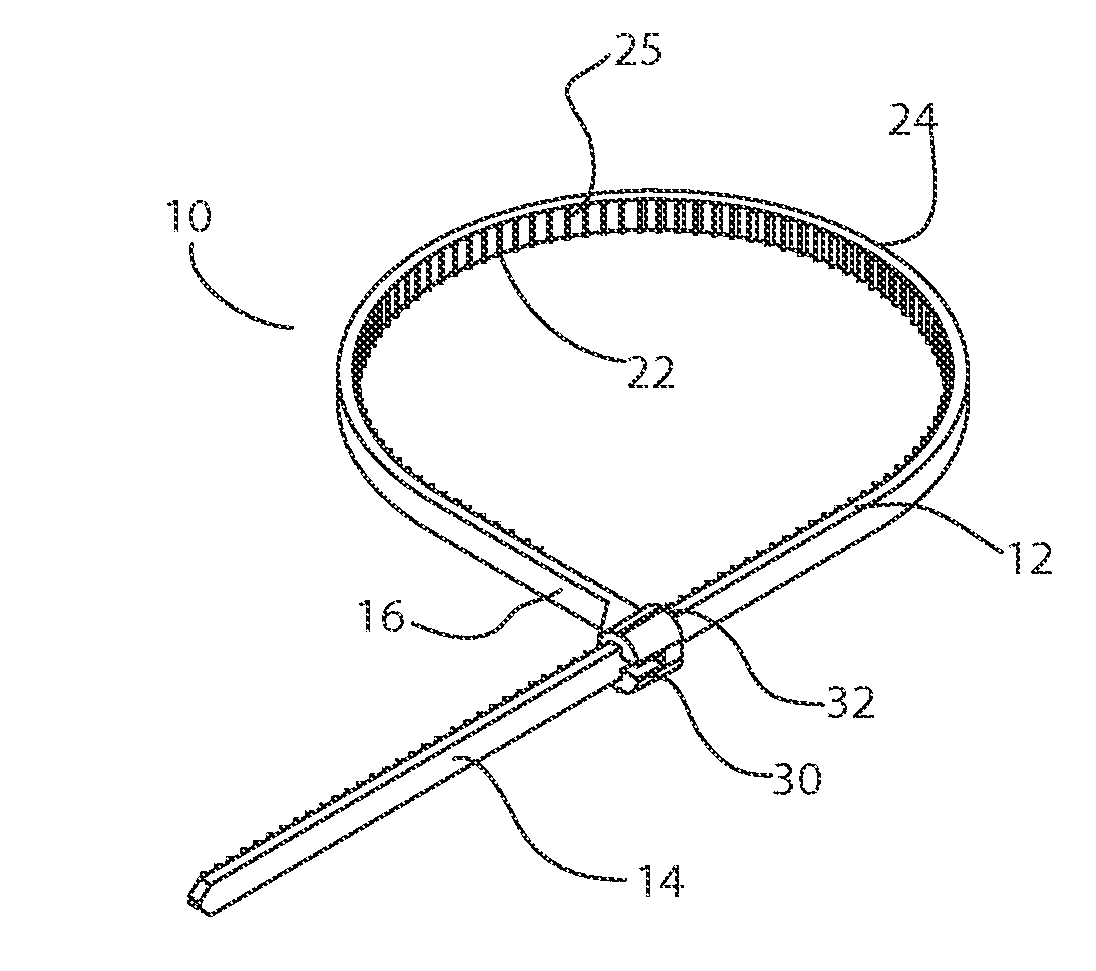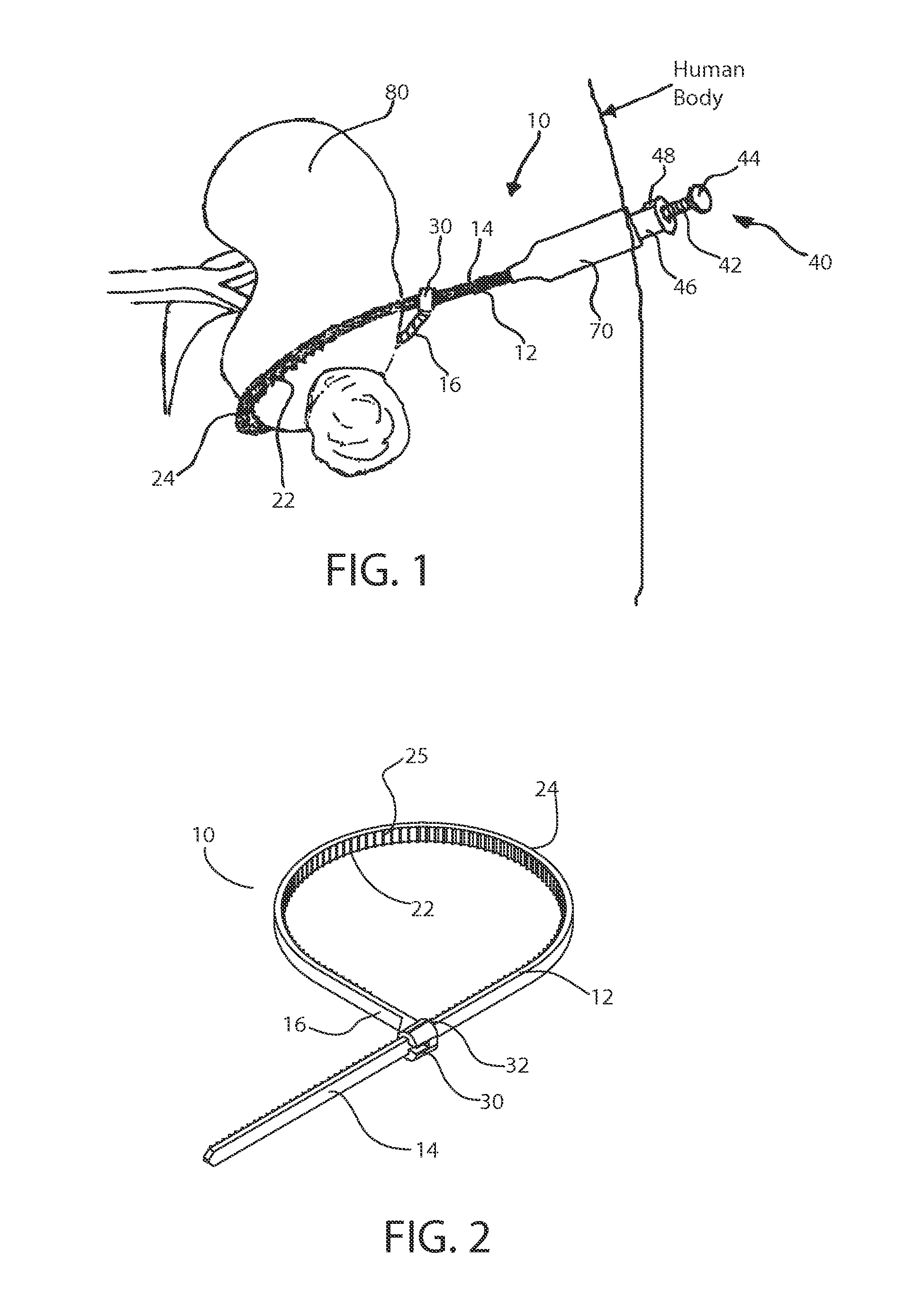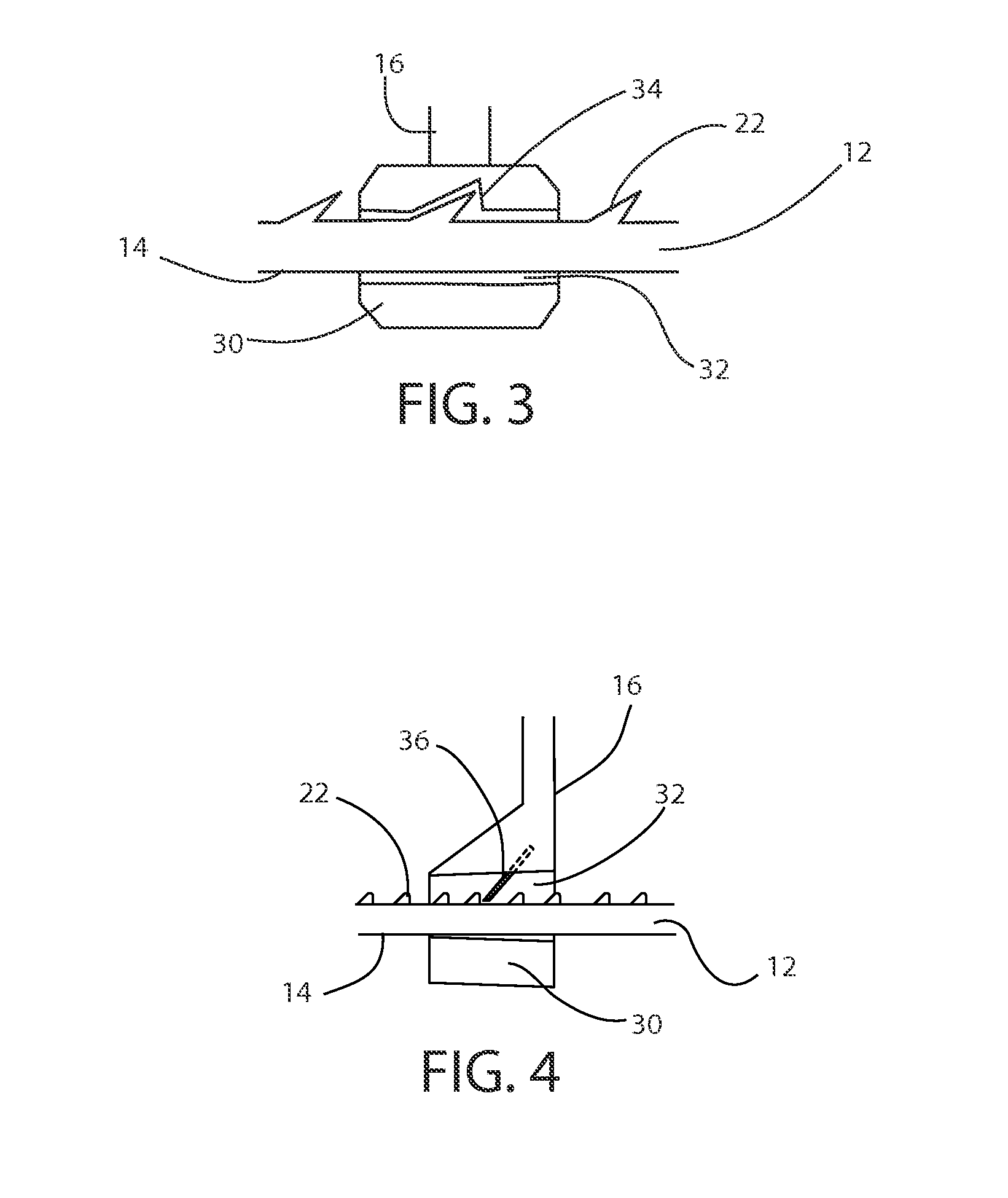Surgical clamp and method of clamping an organ
a surgical clamp and organ technology, applied in the field of surgical clamps, can solve the problems that the surgical clamp is not suitable for adapting to the organ of different types
- Summary
- Abstract
- Description
- Claims
- Application Information
AI Technical Summary
Benefits of technology
Problems solved by technology
Method used
Image
Examples
Embodiment Construction
[0019]FIG. 1 is a laparoscopic surgical clamp according to an exemplary embodiment. Referring to FIG. 1, a surgical clamp 10 includes a flexible elongated band 12 having a proximal end14 and a distal end 16. The band 12 is preferably composed of a material that is biodegradable and bioabsorbable in the body during clinical applications. For example, the band 12 may be composed of a bioabsorbable and biodegradable polymer, such as polyglactin, polydioxanone (PDQ), polycaprolactone (peL), polylactic acid (PLA), polyglycolic acid (PGA), poly(lactic-co-glycolic acid) (PLGA), polyhydroxybutyrate (PHB), or the like.
[0020]A sleeve-like tie 30 secures together the proximal and distal ends 14, 16 of the band 12 to form a loop 24. The loop portion 24 may be encircled around an organ 80 that is to be clamped, such as a kidney, a liver, a uterus, etc. The tie 30 is moveable to constrict the loop portion 24 around the organ 80, but is lockable so that the loop portion 24 can be secured in place ...
PUM
 Login to View More
Login to View More Abstract
Description
Claims
Application Information
 Login to View More
Login to View More - R&D
- Intellectual Property
- Life Sciences
- Materials
- Tech Scout
- Unparalleled Data Quality
- Higher Quality Content
- 60% Fewer Hallucinations
Browse by: Latest US Patents, China's latest patents, Technical Efficacy Thesaurus, Application Domain, Technology Topic, Popular Technical Reports.
© 2025 PatSnap. All rights reserved.Legal|Privacy policy|Modern Slavery Act Transparency Statement|Sitemap|About US| Contact US: help@patsnap.com



